
No Dig Gardening – A Beginner’s Guide
The ultimate guide to reap the benefits of no-dig gardening, complete with a step-by-step guide on building your own.
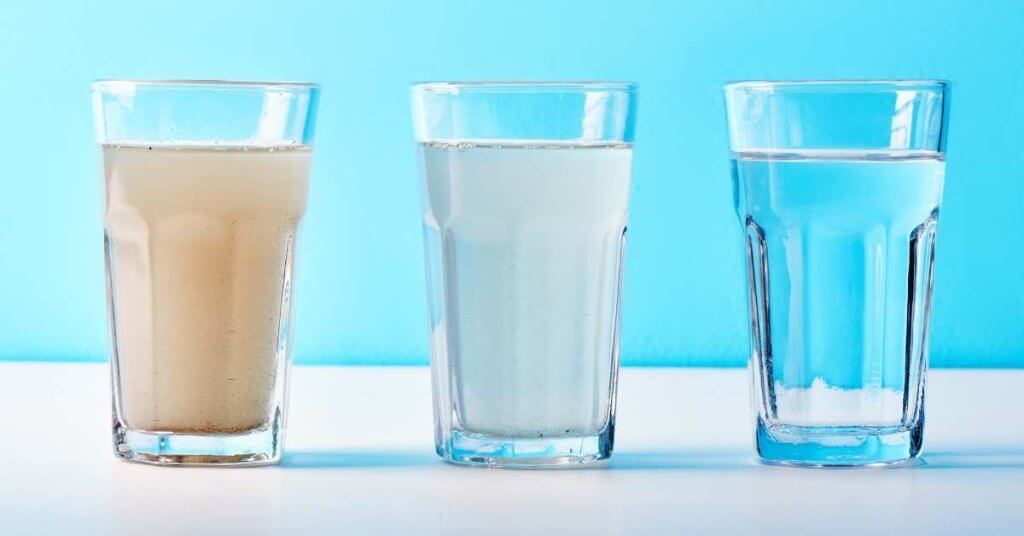
Reverse osmosis (RO) is a powerhouse in water purification, so effective that many bottled water companies rely on large-scale RO systems to ensure their products are as pure as possible. But what exactly is reverse osmosis, and why should you consider it for your home?
At its core, reverse osmosis is a process that uses pressure to force water through a semipermeable membrane, filtering out contaminants, bacteria, and other unwanted substances. The result? Clean, safe, and refreshing water that’s free from many of the impurities found in tap water.
Even if you consider your tap water clean by government standards, you might want to think again. Some substances we’ve long considered safe, like fluoride or disinfectant byproducts, are now being scrutinized for their potential health risks, especially fluoride, disinfection byproducts, and PFAS.
Whether you’re curious about how RO systems work, their health benefits, or how to choose the right system for your needs, this article will guide you through everything you need to know about reverse osmosis.
Whereas osmosis is the natural process of water molecules moving through a semipermeable membrane from an area of low solute concentration (more water, fewer dissolved substances) to an area of high solute concentration (less water, more dissolved substances), reverse osmosis is simply this process in reverse.
The aim is to remove the dissolved substances, such as contaminants, bacteria, and disinfectant byproducts, to provide as pure water as possible.
Reverse osmosis is therefore a water purification process that removes contaminants from water by using pressure to force water molecules through a semipermeable membrane.
There are many reverse osmosis (RO) systems on the market that all aim to purify water for the safest possible source of water. While they differ widely based on sophistication and intended use, most operate on a series of different filters.
The journey begins with pre-filtration, where water passes through a carbon-based filter to eliminate larger particles such as sediment, dirt, and chlorine, protecting the more delicate components of the system, particularly the RO membrane which is quickly damaged by chlorine.
The next stage involves forcing the water through a semipermeable membrane, which is the heart of the RO process. Featuring tiny pores that allow only water molecules to pass through, this membrane effectively filters out contaminants like salts, bacteria, and heavy metals.
The purified water then moves on to the post-filtration stage, where it might pass through an additional carbon filter to remove any lingering tastes or odors and then stored in a tank, ready for use.
Some advanced RO systems include extra stages, such as UV treatment, to further ensure the water’s freshness and purity.
One of the only drawbacks of RO systems is that they produce waste water that is not fit for drinking or use of any kind as it contains all of the potentially harmful contaminants and molecules that were filtered out. This water is either sent to a wastewater tank or piped directly to a drain, depending on the system.
Typically, for every gallon of purified water, an RO system may reject or waste 3 to 4 gallons of water. This varies largely based on the quality and size of the system, but it is regularly improving as the technology develops. Despite this, many consider the trade-off worthwhile for the benefit of pure, safe drinking water.
The primary purpose of reverse osmosis is to produce clean and pure water that avoids almost all of the harmful contaminants, bacteria, and disinfectant byproducts that lie within poor-quality tap water. Even in supposedly clean tap water, however, research is finding contaminants such as microplastics and PFSA whose impact on human health is only just emerging.
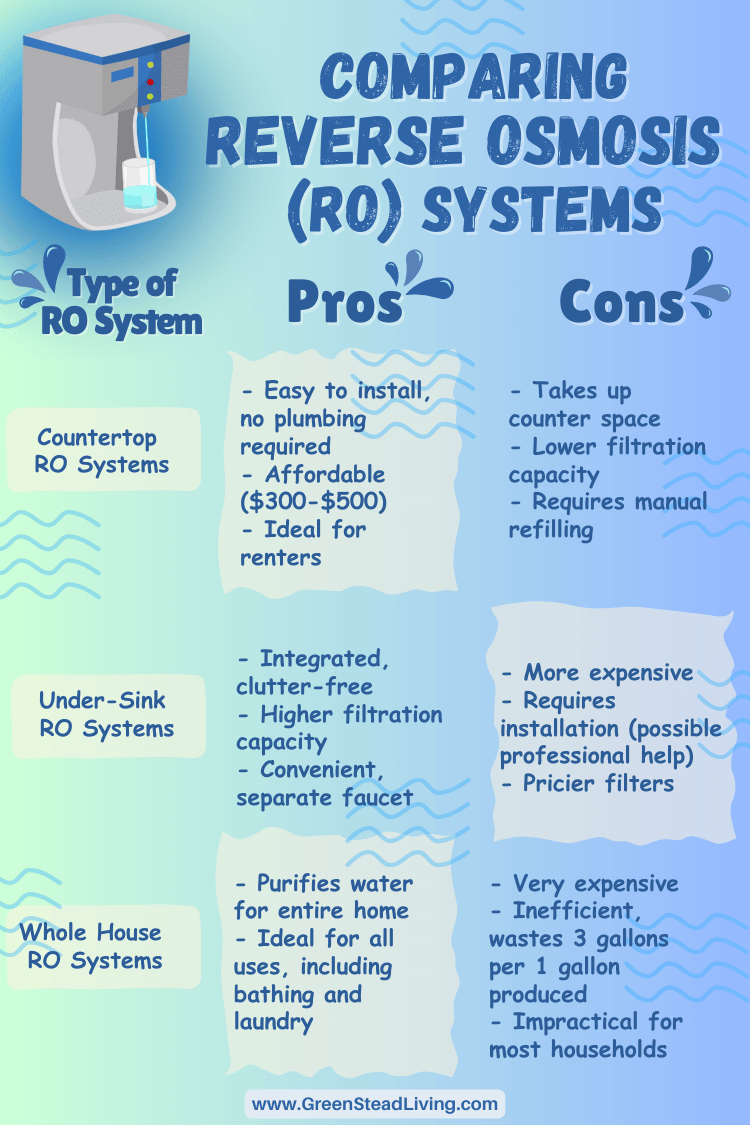
PFSA contamination is a relatively new concern after multiple news outlets picked up disturbing research from recent studies regarding the prevalence and potential harm caused by these resistant particles.
Found in a vast array of items, especially household items like non-stick pans, food packaging, and cleaning products, these human-made chemicals are extremely durable and resistant to water, oil, and heat, making them an ideal candidate for many uses.
Like asbestos, however, their effectiveness comes at a cost; their extraordinary resistance to breaking down means they can persist in the environment (and your body) for decades, earning them the nickname “forever chemicals”. These PFAS find their way into watercourses, especially in urban areas, and eventually in your tap water.
Their persistence is multiplied by their potential harm to human health, with research indicating their involvement in metabolic disorders, immune system disruptions, increased risk of cancers, and developmental problems in children.
This study revealed that PFAS were detected in approximately 45% of drinking water samples, with PFBS, PFHxS, and PFOA being the most frequently found, appearing in around 15% of the samples.
Additionally, research indicates that reverse osmosis can remove between 90-99% of PFAS, including the most prevalent and concerning variants like PFOA and PFOS, depending on the sophistication of the RO filter.
While disinfects such as chlorine are excellent at killing harmful microorganisms like bacteria, viruses, and parasites, they break down into various byproducts, called disinfection byproducts (DBPs) that are harmful to human health.
A 2020 study investigated water from various global sources, focusing on DBPs formed when disinfectants like chlorine, chloramines, and ozone are used in water treatment.
The review highlighted that even low concentrations of DBPs in drinking water can disrupt the endocrine system, responsible for many functions, but especially fertility. Specifically, the study found impairment to ovarian function and spermatogenesis.
Additionally, DBPs were associated with other negative outcomes, such as developmental abnormalities and hormonal imbalances. Although the exact percentage of DBP removal varies depending on the specific RO system and the types of DBPs present, studies generally indicate that reverse osmosis systems can effectively remove a significant portion of DBPs, typically ranging from 60% to over 90%.
While these disinfectants aim to make water safe, and they succeed in removing very harmful bacteria, their byproducts can also cause harm that can be avoided through reverse osmosis.
Since the mid-1940s, fluoride has been added to public drinking water based on early studies showing its potential to prevent tooth decay. This practice, known as water fluoridation, has been credited with reducing cavities in both children and adults.
However, in recent years, research has raised concerns about fluoride’s impact on other areas of health previously untested, particularly regarding the thyroid hormone system, a system vital for managing metabolism, energy, and mood.
Disruptions in thyroid function can lead to hypothyroidism, an increasingly common condition marked by symptoms like fatigue, low energy, and mood swings, which can sometimes resemble or worsen depression.
This study from 2018, for example, found that fluoride, even at levels typically deemed safe in drinking water (0.5mg/L), can adversely affect thyroid-stimulating hormone (TSH) and T3 levels, potentially leading to thyroid issues in both healthy individuals and those with existing thyroid problems.
Even more concerning, a detailed six-year review conducted by the National Toxicology Program (NTP) shed light on fluoride’s effects on brain development, especially in children.
The damning study, which was blocked from publication but later released following a court order, revealed that 52 out of 55 studies linked higher fluoride exposure to lower IQ levels in children at any level. The review found no safe level of fluoride exposure, raising significant concerns about the ongoing practice of adding fluoride to public water systems. Despite these findings, many regulatory bodies have yet to adjust their policies, continuing to support fluoride use without acknowledging the associated risks.
The development of flexible, durable, and inexpensive plastics has brought significant benefits, especially in medical advancements and improved food preservation. On the flip side, these convenient plastics are slowly broken down into tiny plastic particles through environmental factors like UV radiation and ocean currents, which eventually find their way into our water systems.
As a result, these microplastics are now commonly found in the food and drinks we consume, with the average person ingesting an estimated 39,000 to 52,000 microplastic particles annually through diet alone. When considering the microplastics we also inhale from the air, this figure can rise dramatically, reaching between 74,000 and 121,000 particles each year.
The potential health effects from microplastics are grave – they can carry harmful chemicals, such as phthalates and bisphenol A (BPA), which are known endocrine disruptors and can interfere with hormone function, leading to a range of health issues, including inflammation, oxidative stress, and tissue damage.
Fortunately, reverse osmosis is highly effective at removing microplastics, eliminating nearly 100% of them due to their relatively large size, making them easy to filter out.
For those who rely on bottled water to avoid contaminants in tap water, it’s worth noting that studies indicate bottled water often contains more microplastics than tap water, especially in products packaged in recycled PET (R-PET) and glass bottles. Determining whether microplastics are worse than the contaminants found in poor-quality tap water is challenging, but the most reliable way to avoid both issues is to use a reverse osmosis system to filter your tap water.
Since reverse osmosis (RO) removes almost everything from water—both the good and the bad—some people worry that stripping out essential minerals like potassium and calcium could be harmful. These concerns often trace back to outdated studies and misconceptions that have persisted over time.
The primary concern with RO water is that it absorbs minerals crucial for bodily functions, such as magnesium, potassium, iron, zinc, and calcium. Some even argue that because RO water is so pure, it becomes what’s known as a “universal solvent,” eagerly absorbing minerals, salts, and other substances from its surroundings, including from your body, leading to the misguided claim that drinking RO water might lead to mineral deficiencies.
There is no scientific evidence to support this theory, and even a basic understanding of human nutrition reveals the flaws in this logic. The truth is that humans obtain the vast majority of their essential minerals from food, not water, and the mineral content in drinking water is so minimal that it contributes very little to our daily needs. Let’s break it down:
As these examples show, the contribution of water to your daily mineral intake is negligible. For anyone with a reasonably balanced diet, the minerals removed by RO water are easily replaced through food, making this concern largely unfounded.
There’s a lot of talk out there about how reverse osmosis (RO) water is stripped of all the minerals your body needs, with some people worrying that it might even leach minerals from your body. Because of this, you might have heard suggestions to add back minerals your RO water, adding those minerals back in.
But here’s the thing: the amount of minerals you get from drinking water is pretty tiny, so adding them back into your RO water makes barely any difference to your health.
The main reason you might want to add minerals back to your RO water is for taste. RO water is incredibly pure, which means it can taste a bit flat or even empty, especially if you’re used to the flavor of mineral-rich water. It’s not that RO water tastes bad—it’s just completely neutral because there aren’t any minerals in it, and some find it odd that they have been used to drinking mineral water all their life.
Personally, I like the clean, pure taste of RO water, but if you find yourself missing that mineral flavor, you can add minerals if you like. Just make sure you’re getting your minerals from a trustworthy source, because there’s no official oversight on what’s in those products, so you want to be sure you’re getting something safe. If in doubt, leave it out.
Understanding why you need a reverse osmosis (RO) system is one thing, but finding the right system that fits your budget and meets your water needs? That’s a whole different challenge.
RO systems come in three main types: countertop systems, under-sink systems, and whole-house systems. Each has its own set of benefits and drawbacks, depending on what you’re looking for and how much you’re willing to spend.
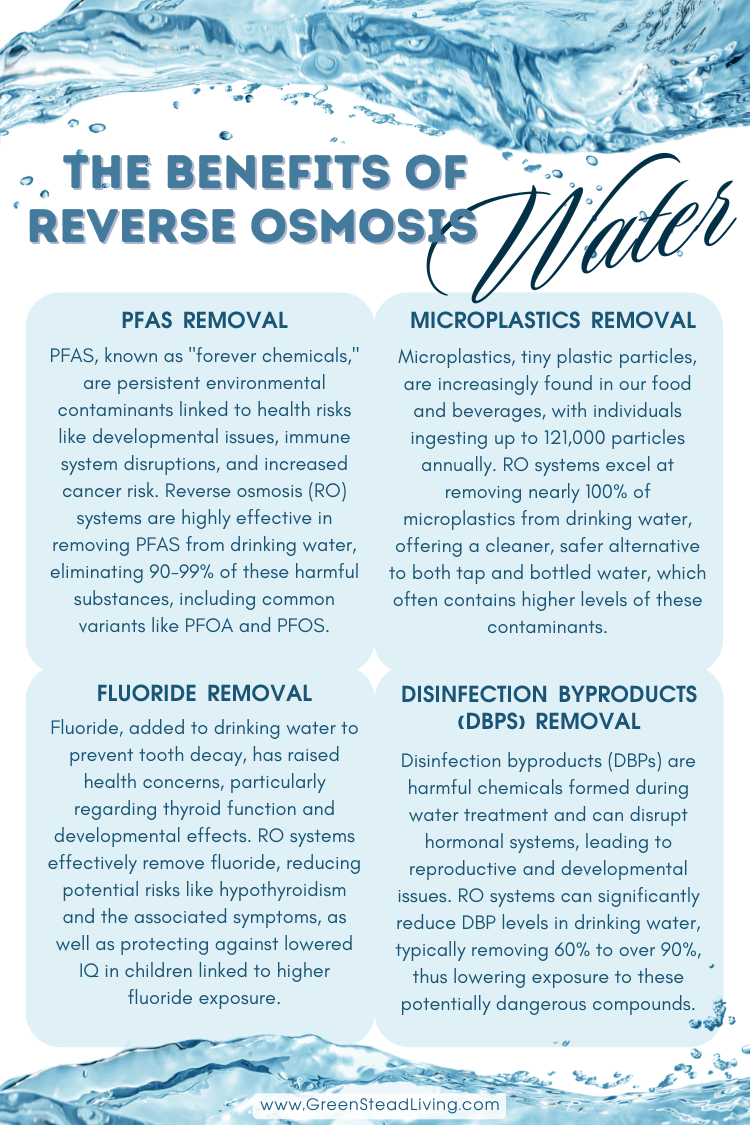
Countertop RO systems are the simplest to set up—no plumbing or DIY skills are required. You just plug in the unit, fill the tank with tap water, and you’re good to go with clean, refreshing RO water. Because they don’t need any drilling or permanent modifications, they’re a great option for renters or anyone who doesn’t want to make lasting changes to their kitchen. It’s the option I’ve chosen, with the Water Drop K-19 that has served me and my family flawlessly.
These systems are generally more affordable, with good quality models ranging from $300 to $500. Keep in mind, though, that you’ll need to replace the filters every 6-12 months, depending on your model and how much water you use, which will cost around $100. I’ve found that cheaper models often have more expensive filters, perhaps to entice customers who have no choice later but to buy their expensive filters. Buyer beware and do your research beforehand.
However, there are a few downsides to countertop systems. As the name suggests, they take up counter space, which can be a bit of a hassle if you have a small kitchen or prefer a clutter-free countertop. They also tend to have a lower filtration capacity, so they might not produce enough purified water for larger households quickly enough. While some models can be connected directly to your plumbing, most require you to manually refill the water tank.
Overall, countertop systems offer an excellent compromise for most households and is where I would recommend first-time buyers to start.
For those willing to put in a little more work and investment for a more permanent solution, under-sink systems may be the way to go. Although they tend to be more expensive and require a bit more effort to install, the benefits are worth it for many.
As the name suggests, under-sink systems are installed out of sight under your sink, freeing up valuable counter space and keeping your kitchen looking neat and uncluttered. However, installation is a bit more involved, usually requiring some drilling and plumbing work. If you’re not keen on DIY, you might need to hire a professional, which can add to the cost, although most should be able to tackle it with little problem.
One big plus is that these systems come with their own dedicated faucet, so you don’t have to mess with your existing ones. While they’re less expensive than whole-house systems, under-sink options generally cost more than countertop models at around $700-$1000 for a good one. The filters also tend to be a little more expensive, which you’ll also need to replace every 6-12 months.
er purified water from every faucet, showerhead, and appliance in your home, meaning high-quality water not just for drinking, but also for bathing, laundry, and every other use. For some people, particularly those with sensitive skin conditions, having RO water for showering and bathing can be a big plus.
However, for most folks, whole-house RO systems are expensive, unnecessary, and extremely wasteful.
Modern RO systems typically waste around 3 gallons of water for every gallon of purified water they produce. While this might not be a big deal for smaller drinking water setups, it becomes a significant issue when you’re filtering water for the entire house. All that wasted water not only adds up quickly but also increases your water bill—essentially money going straight down the drain.
Whole-house systems might make sense for a small percentage of people with specific needs, but for the vast majority, an under-sink or countertop model will provide perfectly good drinking water without the extra cost and waste.
Reverse osmosis systems offer an incredibly effective way to purify your drinking water, removing contaminants, bacteria, and other harmful substances, including those previously deemed “safe” by authority bodies, especially fluoride.
Whether you choose a countertop, under-sink, or whole-house system depends on your specific needs, budget, and living situation. For most people, a countertop or under-sink system will provide all the clean water you need, just make sure you do your homework and purchase a reliable brand and quality system.
While some may worry about the lack of minerals in RO water, the reality is that the contribution of water to your daily mineral intake is minimal, and the benefits of removing harmful substances far outweigh any minor drawbacks. If you’re concerned about taste, you can always choose to remineralize, but it’s not necessary for health reasons.
Ultimately, the decision to invest in an RO system comes down to your priorities—whether it’s ensuring the purest possible drinking water, maintaining a minimalist kitchen, or simply finding the most cost-effective solution for your household.
Reverse osmosis systems offer an incredibly effective way to purify your drinking water, removing contaminants, bacteria, and other harmful substances, including those previously deemed “safe” by authority bodies, especially fluoride.
The contribution of water to your daily mineral intake is negligible. For anyone with a reasonably balanced diet, the minerals removed by RO water are easily replaced through food, making this concern largely unfounded.
The amount of minerals you get from drinking water is pretty tiny, so adding them back into your RO water makes barely any difference to your health.
The main reason you might want to add minerals back to your RO water is for taste. RO water is incredibly pure, which means it can taste a bit flat or even empty, especially if you’re used to the flavor of mineral-rich water. It’s not that RO water tastes bad—it’s just completely neutral because there aren’t any minerals in it, and some find it odd that they have been used to drinking mineral water all their life.

The ultimate guide to reap the benefits of no-dig gardening, complete with a step-by-step guide on building your own.
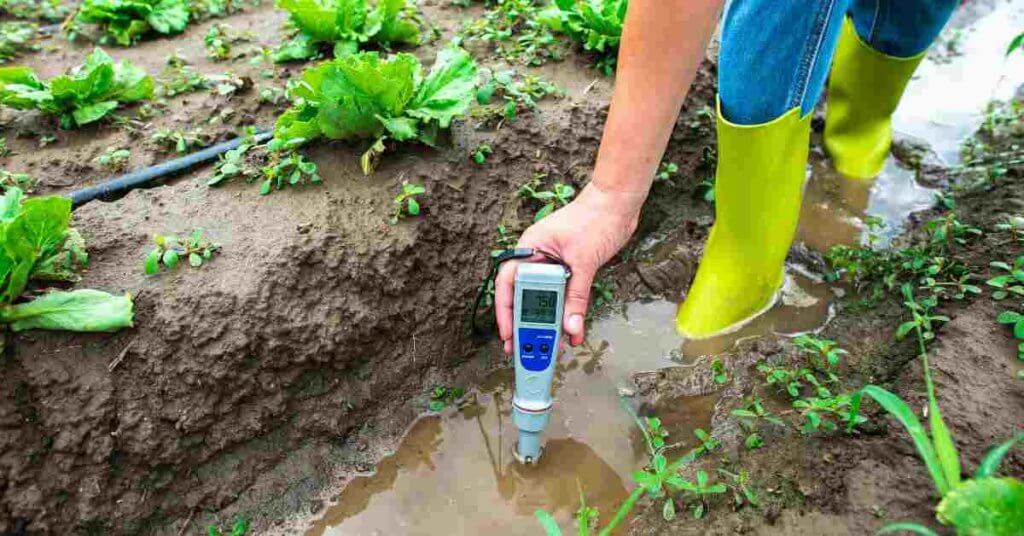
Learn how to test soil pH with these 3 easy techniques, whether at home or from a professional laboratory.

Here is a companion planting chart for herbs, showing which herbs work great together, and which should be avoided.

Learn how to grow basil from seed: start by sowing seeds in well-draining soil, keep the soil moist, and provide plenty of sunlight for a thriving herb garden

Raised beds are an excellent way of gardening for healthy and plentiful fruits and vegetables. Here are the benefits and which type of raised bed might work best for you.
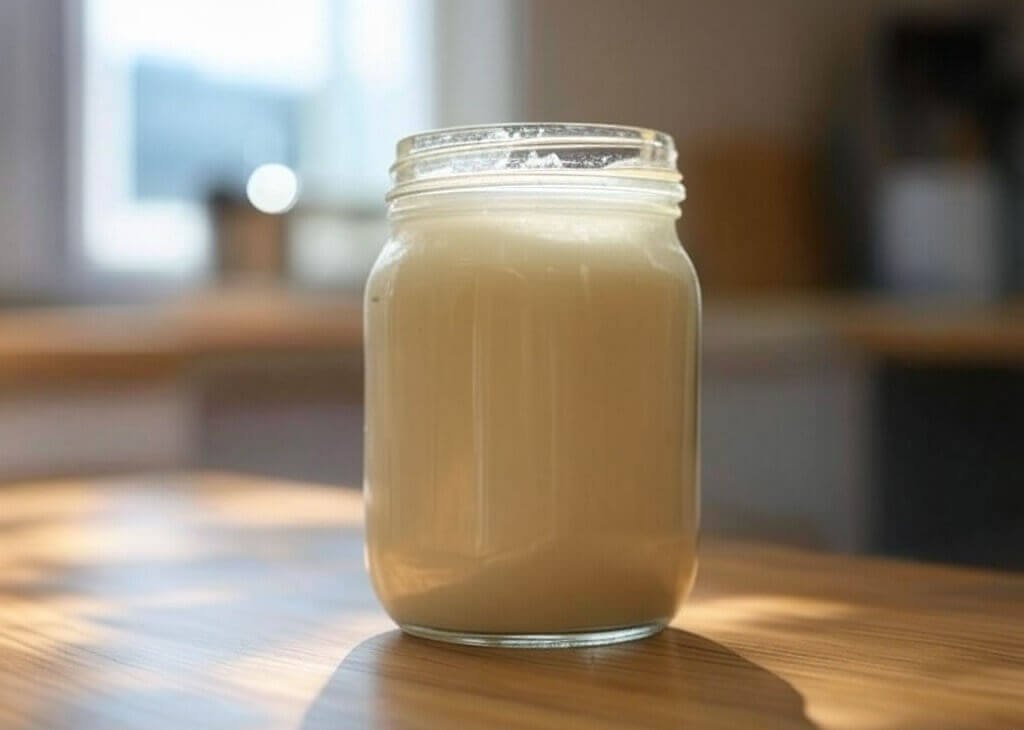
Learn how to make beef tallow at home with this step-by-step guide. Perfect for cooking and skincare, this method ensures pure, long-lasting tallow.